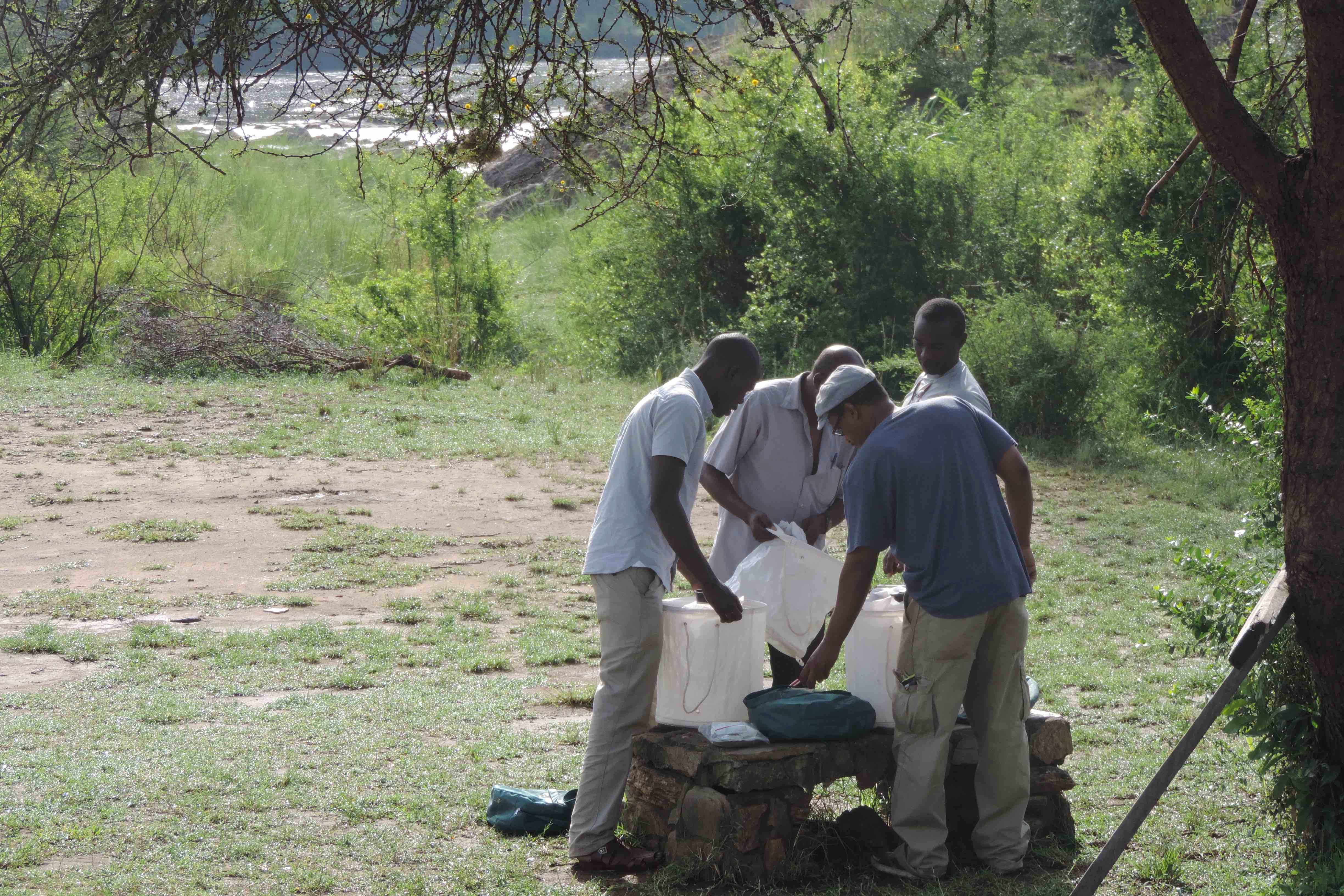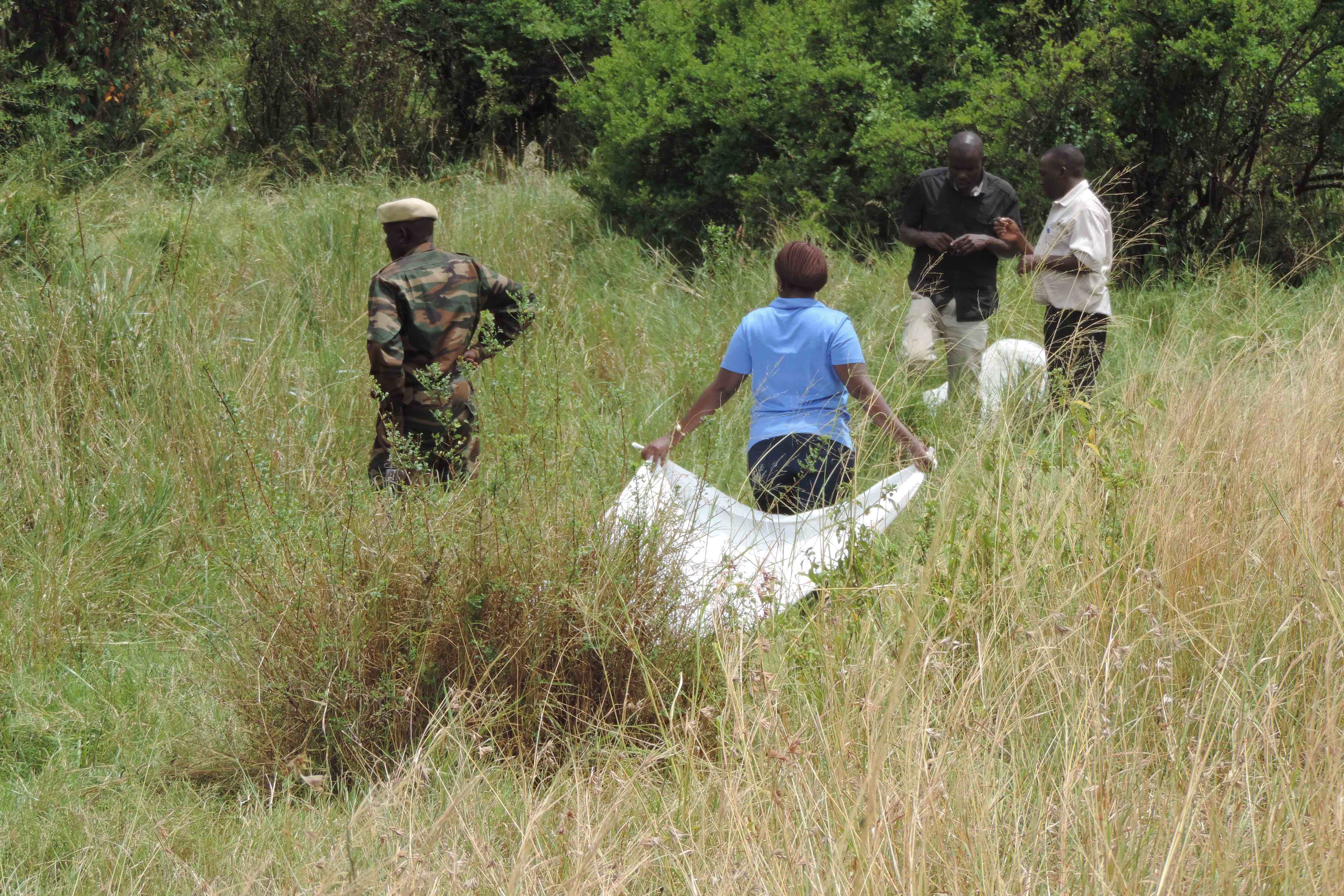|
Cycle 4 (2015 Deadline)
End of the road for illegal bushmeat trade in East Africa: Establishing transboundary surveillance by high resolution melting analysis of vertebrate molecular barcodes PI: Lillian Wambua (until 2018) and Jandouwe Villinger (jandouwe@icipe.org) International Center for Insect Physiology and Ecology (icipe)
U.S. Partner: Scott Miller, Smithsonian Institution
Project Dates: October 2015 - March 2022
Project Overview Illegal bushmeat trade is a global impediment to biodiversity conservation and public health. In Kenya and Tanzania, bushmeat trade has escalated to unsustainable levels, presenting a major threat to East African wildlife populations. Bushmeat trade and consumption expose humans and livestock to diseases such as Ebola and retroviruses, and bushmeat hunters risk contracting diseases from ticks and tsetse flies. Prosecution of bushmeat trade perpetrators in East Africa requires forensic evidence based on cytochrome oxidase I (COI) DNA-barcode sequencing, which is costly and time-consuming. There is a need for rapid, cost-effective forensic tools to screen for wildlife DNA in meat samples to support surveillance of bushmeat trade and improve law enforcement against perpetrators.
 |  | | Setting up mosquito traps by the Mara River (photo courtesy of Dr. Wambua) | Sweeping for host-seeking ticks from grass in one of the sites in the Maasai Mara (photo courtesy of Dr. Wambua) |
Effective prosecution against illegal bushmeat trade in Kenya and Tanzania is hampered by lack of cheap scientific methods and trained personnel to undertake high-throughput screening of suspect samples. The proposed research will develop cost-effective high resolution melting analysis (HRMA)-based bushmeat identification and build the capacity for its implementation by wildlife agencies in Kenya and Tanzania. The protocols will enhance transboundary surveillance systems by accelerating identification of wildlife barcodes in samples, which can then be sequenced to provide forensic proof for prosecution. Adoption of this method by the wildlife agencies will generate crucial data on the extent of illegal bushmeat trade in the region, thereby providing a basis for review and harmonization of national and cross-border policies, laws and penalties against illegal bushmeat trade.
Final Summary of Project Activities
This project, which ran for 6.5 years thanks to supplemental PEER funding, resulted in the development of a cost-effective tool based on PCR-HRM analysis for surveillance and preliminary identification of bushmeat in eastern Africa. This tool holds promise as a companion diagnostic assay if integrated into forensic pipelines, as an initial screening test for bushmeat to eliminate samples of domestic origin, and for the identification of wildlife, which can then be fully barcoded to generate prosecution evidence. This approach was already tested in identifying illegal bushmeat samples from covert surveillance exercises, and in Kenya, the PI and his team were able to demonstrate a 91% cost reduction by using PCR-HRM analysis in a test in which out of >90 suspect specimens, only one meat sample was identified as giraffe (Ouso et al., 2020).
As a result of the PEER project, the team at icipe are expanding the use of HRMA to identify livestock meat-species substitution in the meat-value chain and using HRMA to differentiate meat-species sources from a wide range of processed meat samples (Njaramba et al., 2021). These additional studies have further conservation and consumer protection applications. The project has validated this novel approach as a useful tool to reduce the cost and speed up identification of illegally traded wildlife products. The PEER-funded transfer of the technology to Tanzania, coupled with technical capacity building provided by the PI and his team, has created a platform for Kenya and Tanzania to engage in and intensify transboundary initiatives to curb illegal wildlife trafficking in the region. Dr. Villinger anticipates that continued use of PCR-HRM analysis in Kenya and Tanzania and its further adoption in Uganda, where counterparts also received training and technology transfer, will facilitate close cooperation among wildlife forensics laboratories in East Africa and will enhance regional forensics capabilities and sustainability of the outputs beyond the project lifecycle. This will potentially generate crucial data on the extent of illegal bushmeat trade in East Africa, leading to identification of hotspots to target anti-poaching and anti-trafficking measures. Additionally the techniques developed in the project are leading to better understanding of arthropod disease vector blood feeding habits and highlighting the possibility of vector-borne disease transmission between wildlife, livestock, and humans (Musa et al., 2020; Oundo et al. 2020; Makhulu et al., 2021).
The PCR-HRMA technology and protocols that have been developed through this research have been adopted by government partners in Kenya and Tanzania for surveillance of bushmeat and screening of suspect specimen and as of July 2022 will reportedly soon also be adopted in Uganda. The users have reported cost reduction and speed as advantages of this technology, although formal adoption of PCR-HRM analysis in the forensic pipeline will require further validation and accreditation. In Tanzania, HRMA has also been used to contrast reported bushmeat sales with species-identifications (Ibrahim et al. in prep). The Bushmeat Surveillance in East Africa workshop (May 29-31, 2019), which was funded through this PEER award, has resulted in the beginning of a new network of African scientists involved in wildlife forensics research, which the participants hope, beginning with forensic scientists in Kenya, Tanzania, Uganda, and Zambia, will improve intra-continental cooperation and communication in wildlife forensics.
In terms of capacity building among the project team, eight postgraduate students (Daniel Obado Ouso, Ali Musa, Joseph Oundo, Edward Makhulu, Philip King'a, and Jane Njaramba in Kenya, and Shadia Ibrahim Kilwanila and Rehema M. Makoy in Tanzania) were attached to the project for their MSc studies. They have been involved in field sampling as well as application of PCR and HRMA in their individual projects. Additionally, the PEER project offered placements and short-term training to 13 undergraduate students, of which four were hosted in icipe, Kenya, and nine at Sokoine University of Agriculture Tanzania.
Although the PEER project has been successfully completed, the PI reports that research is ongoing using the techniques for arthropod bloodmeal-host identification at icipe, supported by a new EU Horizons 2020 grant, which will run from September 2021 through August 2025. His institute will receive approximately 559,000 euros out of the entire 6 million euros supporting the consortium of researchers involved. In addition, research on the bushmeat trade is ongoing at the partner organizations involved in the project (Kenya Wildlife Service, Tanzania Wildlife Research Institute, and Uganda Wildlife Authority) based on national priorities.
Publications
Njaramba JK, Wambua L, Mukiama T, Amugune N & Villinger J. Detection of species substitution in the meat value chain by high-resolution melting analysis of mitochondrial PCR products. Foods 2021 (Dec 13);10(12):3090. doi:10.3390/foods10123090
Makhulu EE, Villinger J, Adunga VO, Jeneby MM, Kimathi EM, Mararo E, Oundo JW, Musa AA & Wambua. Tsetse blood-meal sources, endosymbionts, and trypanosome infections provide insight into African trypanosomiasis transmission in the Maasai Mara National Reserve, a wildlife-human-livestock interface. PLoS Neglected Tropical Diseases 2021(Jan 6);15(1): e0008267. doi:10.1371/journal.pntd.0008267
Oundo JW, Villinger J, Jeneby MM, Ong’amo G, Otiende YO, Makhulu EE, Musa AA, Ouso DO & Wambua L. Pathogens, endosymbionts, and blood-meal sources of host-seeking ticks in the fast-changing Maasai Mara wildlife ecosystem. PLoS ONE. 31-Aug-2020;15(8):e0228366. doi.org/10.1371/journal.pone.0228366
Ouso DO, Otiende MY, Jeneby M, Oundo JW, Bargul JL, Miller SE, Wambua L & Villinger J*. Three-gene PCR and high-resolution melting analysis for differentiating vertebrate species mitochondrial DNA for biodiversity research and complementing forensic surveillance. Scientific Reports 16-Mar-2020, 10:4741. doi.org/10.1038/s41598-020-61600-3
Musa AA, Mutiri MW, Musyoki AM, Ouso DO, Oundo JW, Makhulu EE, Wambua L, Villinger J & Jeneby MM. Arboviruses and blood-meal sources in zoophilic mosquitoes at human-wildlife interfaces in Kenya. Vector Borne and Zoonotic Diseases 5-Mar-2020;20(6):444-453. doi:10.1089/vbz.2019.2563
|





